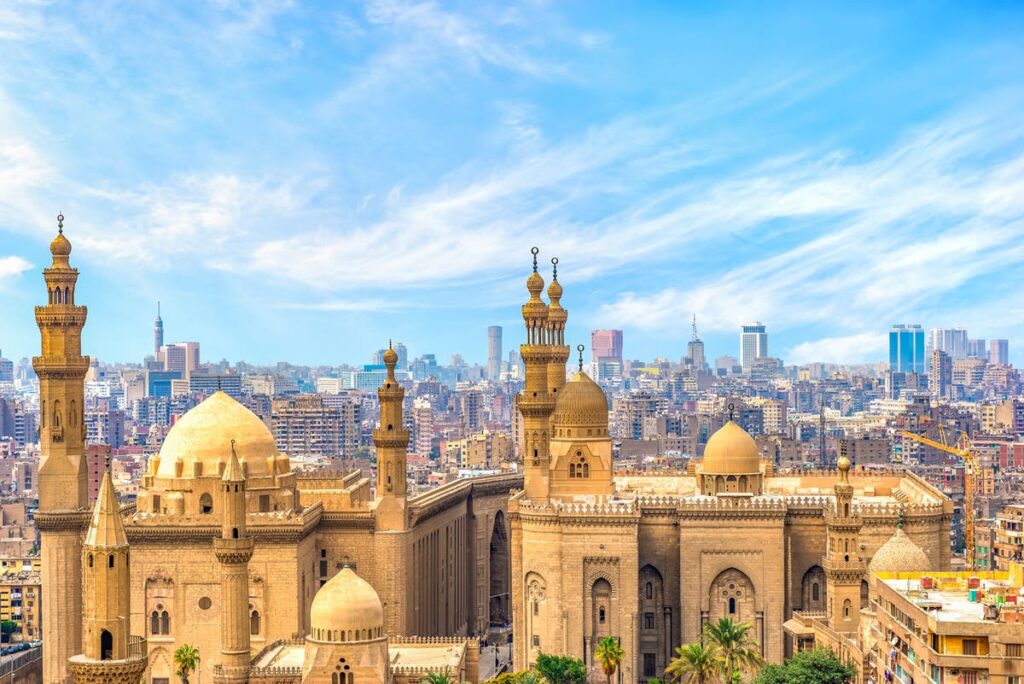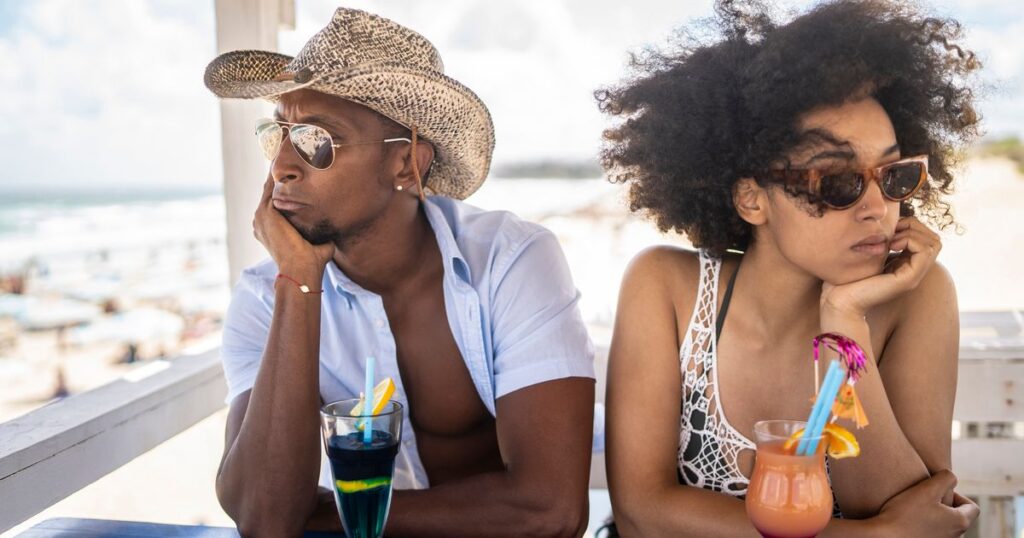
Iceland is a country of extremes. It’s an otherworldly place bordering on the supernatural where the threat of deadly volcanic eruption looms over all life as the country grows two centimetres apart every year. Yet Icelandic people are among the most chill I’ve encountered anywhere – and that’s coming from an Australian.
Their life mottos vary between “tomorrow we could die, so today we live”, “no stress” and “everything will work out”. Locals learn that even the best-laid plans could get remade by Mother Nature – any combination of ice, wind and fire wreaks havoc on roads, houses and air travel regularly – so they fully embrace the uncertainty of life and impressively live in the present.
Two of Iceland’s biggest volcanoes, Katla and Hekla, are due to erupt any day – in fact Katla is 20 years overdue. Icelandic hotelier Sveinn Jensson has been waiting for the Katla eruption since he was a boy: “Our job is to live in harmony and peace with volcanoes. We have lived with and survived them so far.”
Read more: The best northern lights holidays in Iceland
For visitors of Iceland, these lessons from the locals come quickest off the beaten track beyond Iceland’s Ring Road. In pursuit of ditching the usual tourist spots to get respectfully close to this spectacular volcanic land, I set off on The Volcanic Way, a new 700km self-drive route along the south of Iceland. Starting in Keflavik and driving as far as Hali and back – roughly 12 hours of driving across five days – this route unlocks a trifecta of the country’s dramatic landscape, kooky culture, and warm local community.
Picking up the car from the airport, I drove two hours east along the coastal Suðurstrandarvegur road to Hvolsvöllur, and was met with stark landscape changes every 20 minutes. From bubbling streams and mossy green fields, to steam rising in the air between cracks in barren black lava fields, to ice-covered mountains with powerful waterfalls pounding down beside the road; it took little time to feel lost in the wild and alone with the volcanoes.
The high-tech, interactive Lava Centre in Hvolsvöllur is an excellent first stop to learn just how colossal and complex the natural forces are that created Iceland tens of millions of years ago. With earthquake alerts, volcano cams, and touchable rock samples, it’s a robust and accessible insight into rift systems, hotspots and tectonic plates.
On this road trip, you can find local gems just five minutes off the main road. The first night at Hotel Rangá in Hella was like receiving a warm hug. Hotelier Friðrik Pálsson and his family have been connected to the area for generations, and the hand-painted murals and coloured timber paired with geothermal hot tubs, extraordinary local dishes (I tried horse, reindeer and arctic char) and nightly stargazing with local astronomer Sævar Helgi Bragason, made the stay an outstanding mix of cosy luxury.
In the morning, 10 minutes down the road, I explored the mysterious Caves of Hella, a series of man-made caves filled with rune writings dating back more than 1,000 years. It’s Iceland’s oldest still-standing archaeological remains, supposedly crafted by Celtic monks before the Nordic Vikings arrived. The caves keep a perfect 4C – and make you ponder how difficult Iceland’s brutal winters were for its early inhabitants.
Read more: Why fire and ice shouldn’t put tourists off this forever reshaping holiday destination
Towns and villages became more spread out as I drove two hours further east towards Kirkjubæjarklaustur on the ring road, which is the only road this far east open in winter. Winding through the Katla Geopark, there are countless mini-adventures down off-shoot roads, like the hour-long hike through Fjaòrárglijúfur canyon in a water-eroded palagonite tuff formed during the Ice Age two million years ago. For a more lengthy trek, hike across Skógafoss waterfall on the seat of the powerful Eyjafjallajökull volcano that famously erupted in 2010 and grounded air travel throughout Europe. Stop at Hotel Klaustur on the edge of the lava fields with sweeping views over Vatnajökull National Park and try the juicy Klaustur char, caught in the adjacent lake and paired with seasonal root vegetables grown in the hotel’s greenhouse.
I could have spent an extra day exploring the geopark, but took off on another two-hour drive to my furthest destination, Iceland’s largest active volcano, Öræfajökull. This part of the drive gets icy, and the thin black road surrounded by snowy glaciers and mist-covered lagoons makes you wonder if you’ve entered an entirely different country again.
Hiking to the Fjallsárlón glacial lagoon is worthwhile but make sure to take crampons; for those with access needs, try the Jökulsárlón glacial lagoon and its adjacent diamond beach, famous for towering icebergs and lazy seals dotted across the beach. That evening, at Hotel Jókulsárlon, I was lucky enough to witness the heavens open and bathe in the hot tub underneath the spectacle of the northern lights. The low temperatures, no wind and no cloud conditions needed for aurora spotting make it rarer than travellers expect, so when vivid green lights swept across the sky and playfully danced for almost an hour, I was entranced at the profound beauty of the cosmos.
Read more: Best places in Iceland to see the northern lights, from breathtaking waterfalls to enchanting lagoons
An early start to the isolated village of Hali – where there’s more sheep than people – was necessary to indulge in a six-hour hike across Europe’s largest glacier, Vatnajökull. A guided tour with the family-run Glacier Adventure meant scaling down moulins (vertical shafts in the glacier) like ice warriors and then climbing into the mouth of the surrounding mountain to explore a three-month-old ice cave.
Thrown into darkness, a glowing blue light beckoned me forward until I stood under domes of perfectly formed ice. Deep blue hues peppered with volcanic ash refract through peeks of light in a secret underground world akin to Elsa’s ice palace. It’s a sad thought that in as little as 20 years, people might not have the privilege to witness and explore such beautiful natural formations.
Fiercely hungry, I feasted at the neighbouring restaurant at Þórbergur Centre – a heritage museum remembering the famous Icelandic writer Þórbergur Þórðarson. Lamb from their farm (read: wild lambs that spend their days scaling mountains) dusted with fresh rosemary and rhubarb jam was a superb mix of sweet and savoury succulence. This restaurant was the closest I felt to authentic Iceland, sitting in one of the most remote regions of the south chatting to the locals while eating ‘happy marriage cake’ – the cake you have at your grandma’s with rhubarb jam and cream.
Racing 2.5 hours back west to the picturesque village of Vik, nestled under the Katla volcano, I saw the acclaimed Icelandic Lava Show. Here, lava from the 1918 Katla eruption is heated in a furnace to 1,100C before spilling into a showroom. The intense heat as the lava glistened bright orange and slowly cooled to a blackened volcanic glass was a mesmerising showcase of chemistry in action.
Read more: Exploring the wilds of the Atlantic Islands
Vik is a town well worth exploring, especially Reynisfjöru beach. A sunrise ride across the black sand beach on Icelandic horses, which are much like ponies (although don’t say that to a local), is a peaceful way to soak in the expansive views of basalt sea stacks smattering across the horizon.
Tracing our route back towards Keflavik, the “geothermal town” of Hveragerði two hours into the drive is a worthy stop. The Geothermal Park sits atop a boiling cauldron powered by nearby Hengill volcano, and is the easiest way to walk among the sulfuric hot springs and marvel at the geyser that shoots up through a fissure in the earth like a water jet every 20 minutes.
Those on a budget wanting to enjoy bathing in hot springs without the price tag of Instagram haven The Blue Lagoon can relax in the natural thermal baths at the Laugaskarð public swimming pool. Cap off the town with a pizza and geothermal-powered local beer at Ölverk Pizza & Brewery; a charming and characterful craft brewery owned by young locals Laufey and Elvar, who also run a popular beer festival every October.
The final stop, the Geothermal Exhibition inside Iceland’s largest geothermal power plant at Hellisheiðarvirkjun, is an educational insight into Iceland’s world-leading renewable energy innovations. The power plant is part of a network that geothermally powers over 90 per cent of houses in Iceland, and its cutting-edge Carbfix technology turns carbon dioxide into stone in a mighty push towards zero emissions.
There’s so much more to Iceland than the Blue Lagoon, Reykjavík and the northern lights. The history of Iceland is written in the tephra layers of its landscape, and The Volcanic Way offers an accessible year-round immersion through ‘slow travel’ – in keeping with the unhurried rhythm of the Icelandic spirit.
Maryann Wright travelled with support from Visit South Iceland, Visit Iceland, PLAY Airlines.
Read more: Believe it or not, you can enjoy a foodie trip to Iceland – how Reykjavik became a culinary destination
Premium IPTV Experience with line4k
Experience the ultimate entertainment with our premium IPTV service. Watch your favorite channels, movies, and sports events in stunning 4K quality. Enjoy seamless streaming with zero buffering and access to over 10,000+ channels worldwide.

















